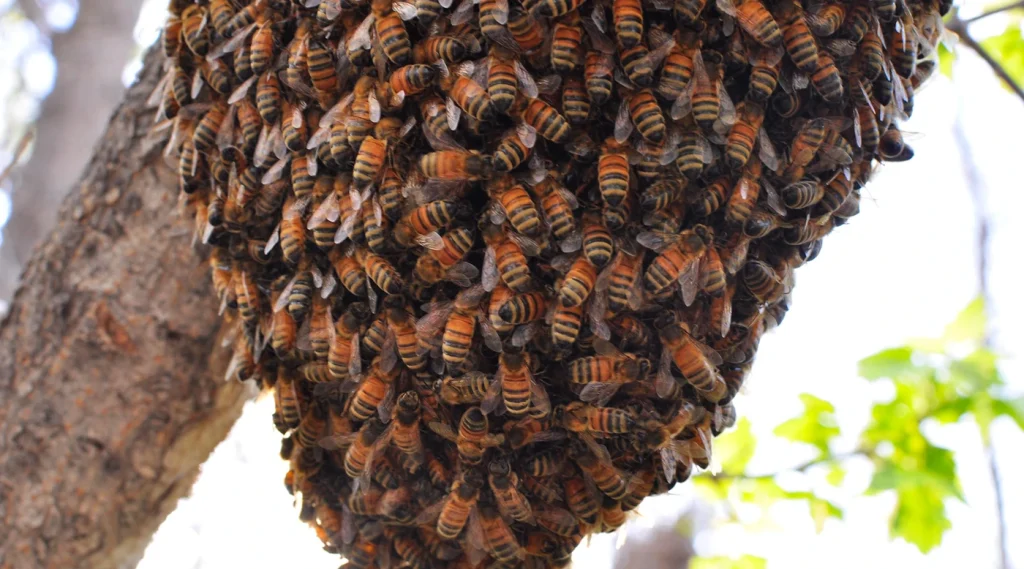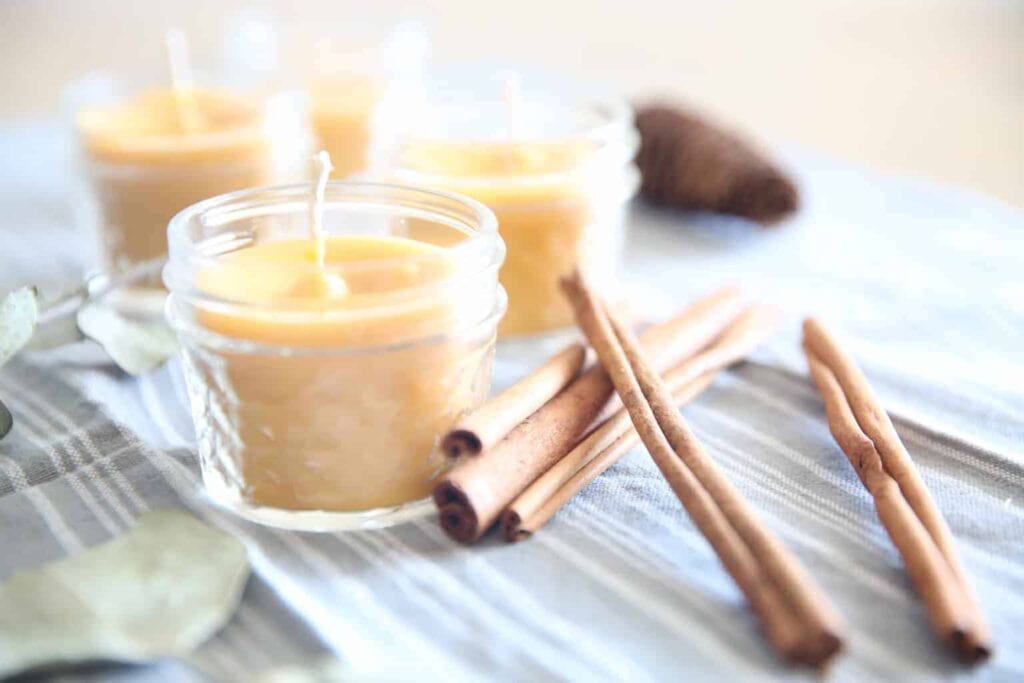What is a hive?
At its most basic level, the hive is a home and workplace for the honeybees, where they will live and raise their young. There are two types of hives: natural and artificial (or manmade). Today, we will be able to answer to the question “What is a hive?”
Natural hives are those that occur naturally in structures where wild honeybees may live. Natural hives may be found in rock cavities and hollow trees. They may also be found in the walls of buildings, usually abandoned buildings. You might also find combs in abandoned cars or even on branches.
However, those that are exposed to the elements will not survive in areas of harsh winters and cold temperatures. Artificial hives are manmade structures, usually wooden-box type, which are designed and built to house honeybees, their young, and their stores of food and honey.
At one time, manmade hives were simply round, tall structures made out of coils of straw called “skepts.” Today, the artificial or manmade hive will most likely be made of wood and have several parts to it.
The parts are:
• Stand
• Bottom boards
• Hive bodies or supers
• Queen excluder
• Inner cover
• Outer cover
Parts of a Hive
The stand is down at the very bottom of the hive. Although it is an optional piece of equipment and is not necessary to the hive, it does provide a landing board for the bees, making it easier for them to get into the hive.
There are two styles of bottom boards to choose from: solid and screened. These are exactly as they sound. The solid bottom board has a solid bottom. You can use it to help keep the hive a bit warmer in areas where the winters may be harsh and cold.
However, it does not allow dirt and debris to escape from the hive. Screen bottom boards are covered with a screen bottom instead of solid. These can aid in ventilation, especially in areas with hot summers or climates. You will need only one or the other in your hive. It is best to choose according to your honeybees’ needs.
Some beekeepers may use a screen bottom in the good weather and swap out to a solid bottom during cold winter months, but, again, it is your choice. Hive bodies, or supers, are the large boxes that make up the body of the hive. There are two supers for each hive: the deep super and the honey super. The deep super is a large hive box that holds ten frames. The honey super is the box that holds the frames where the bees will store their honey. The deep super frames are made from either wood or plastic.
The frames will usually have a wax foundation in the middle, and are used by the bees to build their own wax on. Honey super frames fit in the honey super and are also for the bees to use as a base to build on, as with deep super frames.
Frames are simply the pieces that slide into the super to allow the bees to build their combs. Think about a really, really simple wooden picture frame, but with a wax sheet where the glass would go, and you have the basic idea. Because they slide in and out, it makes for easier removal and allows the beekeeper to check the hives periodically without harming the honeycomb.
The queen excluder is a flat rack that has holes large enough for workers to get in and out, but small enough not to allow the queen to get out. Usually made of metal or plastic, it is used to prevent the queen from getting into the honey super and lay her eggs in the honey. Although it is not absolutely necessary to have an excluder in your hive, many keepers find it quite helpful.
The inner cover of the hive is made of wood angles on the super at the top of the stack. It has two entrance holes: one in the middle, and one to the outside, as well as a winter side and a side for the rest of the year. Basically, it is rim-side down for the winter and rim-side up for the rest of the year.
There are many types of outer covers to choose from, but one of the most popular has a galvanized metal top attached to it. Outer covers are basically ones that go over the inner covers with sides that hang over, providing a snug fit and protection from the weather. There are also a few other options to consider for your hive. One is an entrance reducer.
Entrance reducers are small pieces of wood that fit between the bottom board and first deep super. They make entrance holes smaller, keeping your hive safe from robber bees and controlling the traffic in and out, as well as helping with ventilation and temperature control.
The slanted wrap, another option for the hive, helps ventilation and congestion by providing warm room between the entrance and the brood area.
Besides the standard hive type, which as its name suggests is the most common type of hive that you will probably see both in use and for sale, there are a few other styles/types of beehives. They are not overly common (at least in the United States), so I am just touching on them so you are aware of other hive options.
Some beekeepers believe that these are a more natural and bee friendly way to keep their bees. The alternative hive styles are:
• Warré
• Delon
• Top Bar
Let us now take a brief look at each of the three styles.
Warré
The Warré hive was developed in the early 1900s by French monk, Abbé Émile Warré, who was also the author of L’Spiculture Pour Tous (“Beekeeping for All”), a book that is still available today. The basic concept for the Warré is boxes, but with bars instead of frames (for the bees to build their combs), with the bars having a started strip attached, which allow the honeybees to build their combs.
With the Warré, the hive is usually opened only at honey harvest time. This is due to the bees building their comb downward from the top bar. Being that there is no frame, the comb can and, many times, is damaged during opening.
The Warré was initially used in France, Switzerland, and Belgium, with it coming to use in the United States around 2008.
Delon
The Delon hive is also known as the Stable-Climate hive. Developed by Roger Delon, who was a commercial beekeeper in France and Switzerland, the hive basically reconfigures a Warré and is based on a hollow tree.
Top Bar
The Top Bar hive is a very basic hive style (probably one of the most basic). The box is in the shape of an inverted triangle with legs and a cover (looking like a wooden feed trough).
There are bars running across the top, allowing the bees to attach and hang their combs (again, no frames). It should be noted that this style is best suited for tropical and temperate climates.
The early Top Bars of Ancient Greece are thought to have had an even more basic setup: baskets with bars across the top. The concept is thought to be thousands of years old. As the Top Bar hives have no frames, the honey cannot be removed from the comb with an extruder (this would apply to the Warré and Delon as well).
So, in a nutshell, these are the three other alternatives that you have available to hive you bees. If you are seriously considering one of these hives, it is strongly advisable to do your homework before you jump in.
If you are able to, go online and find beekeepers that actually use or have used the style that you are interested in. If you cannot get online, the local extension office should be able to tell you about beekeepers in your area, as well as beekeeping organizations in your area, region, or state.
Ask about the pros and cons, areas that the hive is best used in, ease of use, safety issues (for both you and your bees), and any honey- production issues. (Remember that, even if you are not harvesting honey, your bees still need it to sustain themselves.)
You may be able to purchase these three hives, but you can build them as well. Keep in mind that, whatever style/type of hive that you decide to use, make sure that it is the best one for both you and your bees.
Setting Up Your Hive
Whatever you choose for your hive, it is important to keep your
hive up off the ground. This is easily done by setting the hive on
cinder blocks with boards running across them (to stabilize the hive
on the block).Another important step in hive construction is to give the hive’s
wood extra protection from the elements. Most keepers will paint
them. Make sure to only paint the exposed outside areas, however.
The bees will take care of the inside by covering it with a plant,
sap, and wax mixture of their own making called propolis.inally, when the hive is done, you need to find the right spot for
it. It should be away from roads or pathways when possible. This
will help to prevent your bees from being bothered by too much
human and pet foot traffic, which would result in them becoming
grumpy and on the defensive.The ideal placement should also feature limited exposure to
wind, have a water source nearby for the bees, and be in an area of
good drainage. It should be level, have some sort of wind block
(especially if you are in an area of cold and snowy winters), and
have a good balance of sun and shade. More sun is preferable than
more shade if you cannot find the “perfect” spot, as your bees will
slow down if it is too cool and shady.Do not worry if you cannot account for all of these conditions
when placing your hive. Yet do remember one thing: be sure to
allow easy access for yourself. For the other steps, do what you can,
but things like sun and a dry area are important to your hive, as is
the water source (which you may have to create yourself if there
are no natural sources nearby).
Originally posted 2020-09-23 16:29:37.






